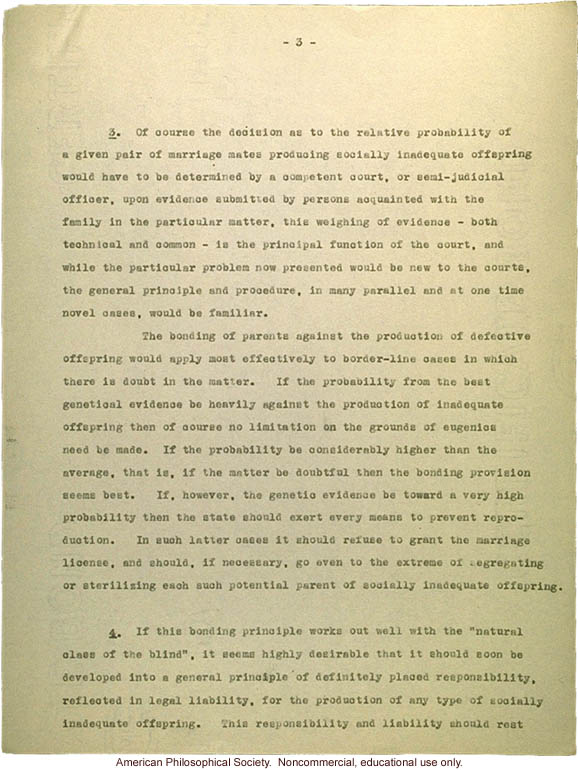-3-
3. Of course the decision as to the relative probability of a given pair of marriage mates producing socially inadequate offspring would have to be determined by a competent court, or semi-judicial officer, upon evidence submitted by persons acquainted with the family in the particular matter, this weighing of evidence - both technical and common - is the principal function of the court, and while the particular problem now presented would be new to the courts, the general principle and procedure, in many parallel and at one time novel cases, would be familiar.
The bonding of parents against the production of defective offspring would apply most effectively to border-line cases in which there is doubt in the matter. If the probability from the best genetical evidence be heavily against the production of inadequate offspring then of course no limitation on the grounds of eugenics need be made. If the probability be considerably higher that the average, that is, if the matter be doubtful then the bonding provision seems best. If, however, the genetic evidence be toward a very high probability then the state should exert every means to prevent reproduction. In such latter cases it should refuse to grant the marriage license, and should, if necessary, go even to the extreme of segregating or sterilizing each such potential parent of socially inadequate offspring.
4. If this bonding principle works out well with the "natural class of the blind", it seems highly desirable that it should soon be developed into a general principle of definitely placed responsibility, reflected in legal liability, for the production of any type of socially inadequate offspring. This responsibility and liability should rest


